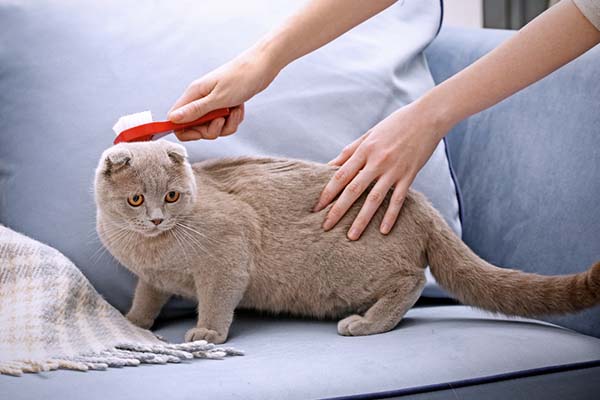As much as cats are expert groomers, helping them groom themselves through brushing is something they’ll surely appreciate. But, you might be asking, “How often should you brush your cat?”
You see, no amount of self-licking is enough to keep their coat healthy and shiny. Your cat won’t be able to get rid of any loose hair, check yourself for some ticks and fleas, or even tell you if she feels that something’s not right.
Only you can do all these if you brush their coat regularly. But how often should it be? That is exactly what we’re going to tackle below.
How Often Should You Brush Your Cat?
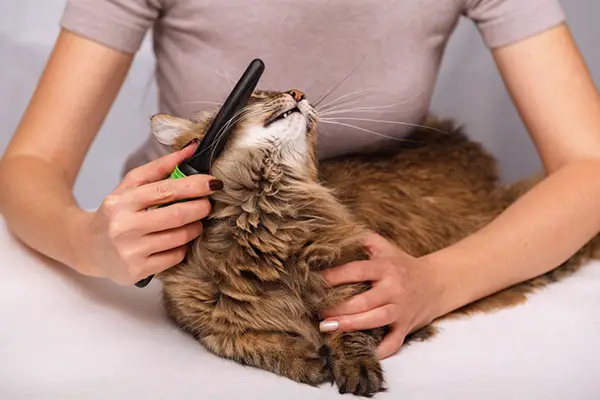
Why do you think it is important to know how often to brush your cat?
Well, as much as brushing can offer a wide range of benefits, too much brushing is also not good for your cat. This might cause baldness and other skin problems that would certainly not make your cat happy.
The frequency of brushing depends on the type of coat your cat has. To get an idea, we’re going to share with you how much you should brush a long-haired cat, a medium-haired cat, and a short-haired cat. Typically one or two brushings weekly are more than adequate for most of our feline friends.
Long-Haired Cats
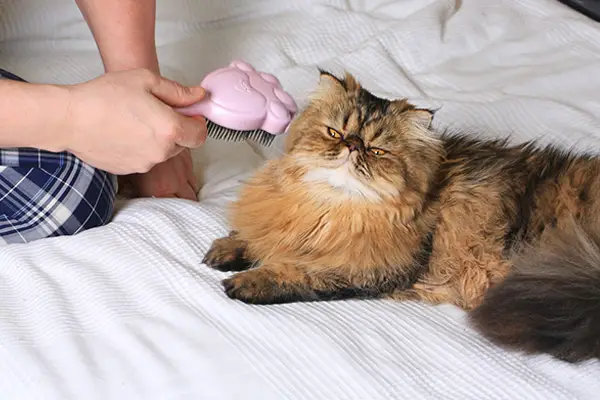
Long-haired cats are known to be high-maintenance cats. Their long and thick coats must be brushed daily, so it doesn’t tangle, knot, or get matted. At the same time, long-haired cats tend to shed more frequently than cats with a different hair type, so that’s something you need to take care of, too.
Medium-Haired Cats
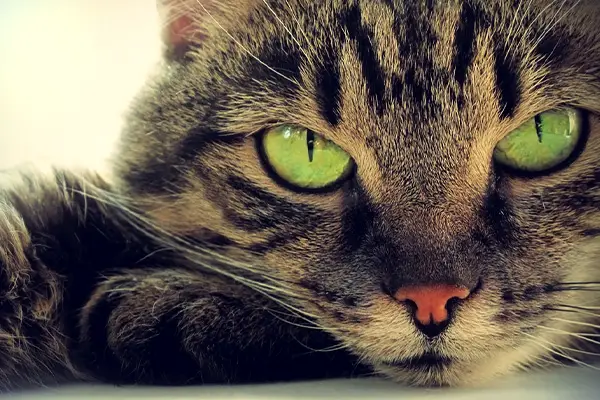
Medium-haired cats may not have fur as long as long-haired cats, but they are still prone to get tangled up. So, it’s also recommended to brush their coats several times a week. If you have a heavy-shedder, it’s probably best to brush your cat’s coat daily to minimize shedding.
Short-Haired Cats
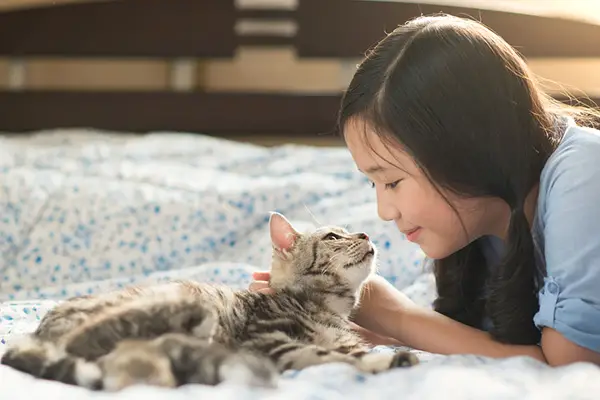
Short-haired cats are the easiest coat to deal with. It’s very low-maintenance and is recommended to be brushed only once or twice a week. As their coat is thinner and shorter, brushing daily may lead to skin irritation and baldness.
The Importance Of Regular Brushing
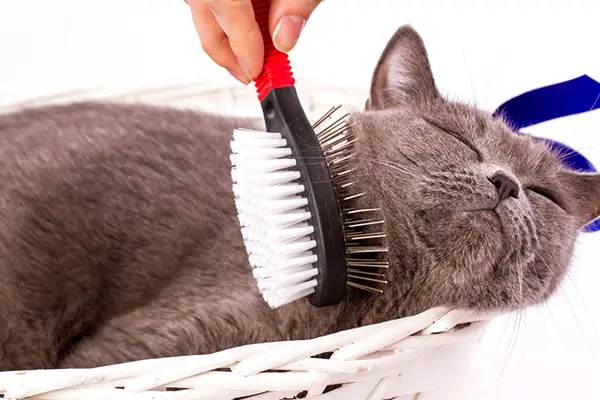
Now that you know the frequency of brushing your cat needs, you might think it’s a lot of hard work, especially if you have long-haired or medium-haired breeds. Yes, it will take a few minutes of your day, and if you have a cat who doesn’t like being brushed, you might end up getting scratched.
However, you must know that brushing your cat is very important. It offers lots of benefits to your feline friend and also to you. If you don’t brush your cat, both of you will be missing out on the following advantages:
1. Reduce Shedding
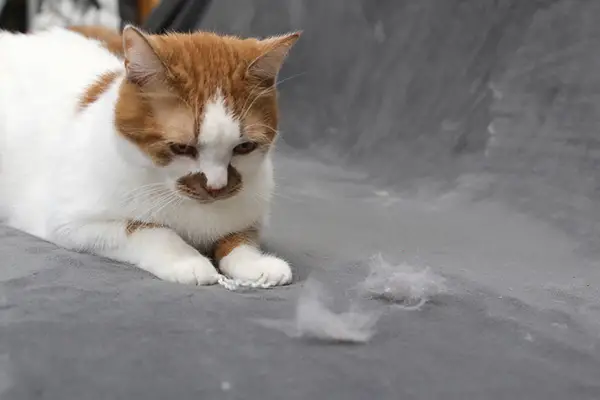
Cat’s hair might already be part of your everyday life, and that’s completely fine. However, sometimes, no matter how much you clean, the cat hair in your house is never-ending, especially if you have a heavy shedder.
The only way you can reduce shedding is by brushing your cat on a regular basis. This way, you get to remove any loose or dead hair. It’s most important to do this if you have long-haired or medium-haired cats as they are more prone to shedding.
Do this regularly to minimize cat hair all around your house, and, this will mean less house cleaning for you as well!
2. Distributes Natural Oil Evenly
Cats produce natural oils that are beneficial to their coat. By brushing them, you’ll be able to distribute this natural oil evenly, making your cat’s coat that beautiful shine. Another benefit of spreading the natural oils is that it helps protect your cat from skin irritations.
3. Reduces Hairball Formations
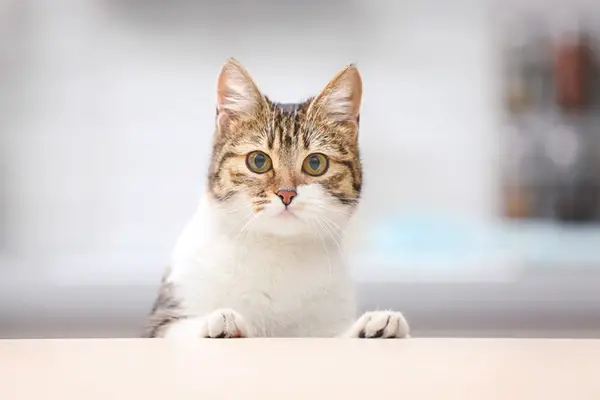
We always see cats groom themselves through self-licking. And though we all think that this type of grooming is enough, it’s not.
Without brushing your cat’s fur, your cat can shed a lot. As your cat licks herself, she’ll end up ingesting some of the hair. When this is accumulated, it will form into hairballs that your cat vomits out.
This may be considered normal, but it can be life-threatening if your cat continues to ingest a lot. So, prevent any health problems from happening by grooming their coat.
More brushing will minimize cat shedding and, thus, fewer hairballs to form.
4. Relaxes Your Cat
Just as we love it when hairdressers touch our heads, brushing is also a great way to help your cat relax. That is if she likes it. Brushes can always double up as a massage tool that gives your cat that soothing feeling. And, it stimulates blood circulation.
5. Strengthens Your Bond
Brushing your cat is also a great way to strengthen your bond with her. Compared to dogs, cats are not the most affectionate animal. But, your brushing sessions will be a great time to play and strengthen that bond and build mutual trust.
6. You Can Check Fleas and Ticks
There’s no better way to check for cat fleas, flea dirt, and ticks than during the grooming sessions. Aside from fleas and ticks, you will also be able to detect other skin problems such as bumps and rashes.
Through this, you’ll be able to take your cat to the vet early without waiting for things to get worse. And if your cat has fleas, you’ll also get to have the chance to remove them, so your cat remains comfortable.
7. Stimulated Blood Circulation
We already mentioned that brushing could also double up as a massage for your cat. As massages help improve blood circulation, continuous brushing will ensure that your cat’s coat remains healthy and they have healthy skin.
How To Brush Your Cat
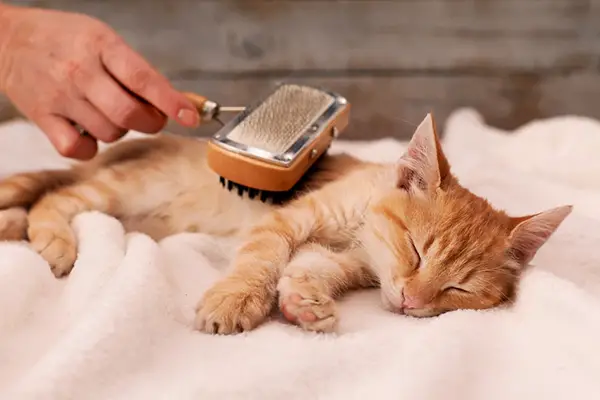
As you can see, brushing your cat is so important and will help you enjoy lots of benefits. But, it’s also essential to brush your cat the right way, or you might only end up hurting her, causing more damage to her coat.
Here are some tips you can follow to help your cat enjoy brushing sessions:
Use The Right Cat Brush
Before you even start grooming your cat, it’s essential to find the right brush to use first.
As you know, cat brushes are designed differently, and each brush caters to a different type of coat, e.g., long-haired, medium-haired, short-haired. Some brushes are even designed for a specific function such as a dual sided brush, one to remove dead hair, a metal comb, a wide toothed comb, etc.
Knowing the different types of cat bushes and their uses is very important in searching for the best cat brush for your cat.
Let’s take a look at the different types of cat brushes:
Best Cat Brush For Any Type Of Cat Hair
Slicker Cat Grooming Brush
- Quality combs are equipped with self-cleaning buttons to make your shedding easier and more efficient.
- The stainless steel trimming blade remove knots safely and comfortable without scratching your cat’s skin
First on our list is a slicker brush. This is one of the most commonly used cat brushes because it caters to any type of fur. It’s best used for removing tangles, preventing mats, and smoothening a cat’s fur. The design can either be curved or slanted and comes with very thin teeth.
As slicker brushes always come with compact, metal-wire bristles, it’s essential to be gentle when using them to brush your cat. If you force your way through the coat or use the brush stiffly, you might end up scratching your cat’s body.
It’s recommended only to use long, gentle strokes when using a slicker brush.
Click Here for Latest PriceSlicker Brush
B08GWZ26PL
- Quality combs are equipped with self-cleaning buttons to make your shedding easier and more efficient.
- The stainless steel trimming blade remove knots safely and comfortable without scratching your cat’s skin
First on our list is a slicker brush. This is one of the most commonly used cat brushes because it caters to any type of fur. It’s best used for removing tangles, preventing mats, and smoothening a cat’s fur. The design can either be curved or slanted and comes with very thin teeth.
As slicker brushes always come with compact, metal-wire bristles, it’s essential to be gentle when using them to brush your cat. If you force your way through the coat or use the brush stiffly, you might end up scratching your cat’s body.
It’s recommended only to use long, gentle strokes when using a slicker brush.
Moulting or Flea Comb
B001GU4Y2I
- Moulting Comb with ergonomic hand grip.
- Suitable for all coat types.
- Removes knots and tangles.
Moulting comb is generally used for cats with long, fine hair. The comb is designed to detangle the cat’s fur, prevent mats, and reduce shedding. If you look at the moulting comb carefully, you’ll observe that there are two pin lengths. The longer pin is there to detangle your cat’s topcoat, while the shorter pin is designed to remove loose or dead hair.
Bristle Brush
Mars Boar Bristle Cat Hair Brush, Made in Germany, 3/4″ Bristles and 2″ Wide Head
B00OGLN6H8
- Nicely finished birch wood handle with nutwood varnishing
- Quality natural boar bristles
- Professional-grade grooming brush for cats
- 7.25″ Length
- German quality & engineering; manufactured in Germany
A bristle brush almost has a similar design to slacker brushes. The only difference is that bristle brushes usually have softer teeth.
This cat brush can be used in grooming all hair types. It’s also a grooming tool enough to smoothen a short-haired cat’s coat. However, for long-haired cats, this is only best used for finishing touches, right after the slicker brush is used.
Rubber Brush
Cat Grooming Glove Hair Remover Brush
B07BF993FK
- These gloves use enhanced 268 tips, an enhanced five-finger design, that allows you to modify hard-to-reach places such as your cat’s face, legs, or tail, ensuring that no place is missed.
- Allows for quick, gentle, and effective grooming.
- Keeps your hands and nails clean.
- The hair sticks to the gloves and can be easily removed for disposal.
Rubber brushes, also called grooming mittens, are grooming tools used for cats scared of brushes or combs. This type of brush fits in the palm of your hand. The pins are made of silicone, so it’s soft in your cat’s fur.
Your cat won’t even think that you’re grooming her. You’ll be grooming her like you’re only petting her. And the best part is, you’ll easily access hard-to-reach areas.
Double-Sided Brush
Burt’s Bees for Pets Cat Brushes
B083KY79QS
- Burt’s Bees Double Sided Pin & Bristle Brush for Cats has rounded pins that helps to remove tangles, knots, dirt, and dander as well as soft bristles which gently remove loose hair and create shine
- When used regularly, Burt’s Bees for Pets pin and bristle brush will restore softness, smoothness, and luster to your cat’s coat
- Burt’s Bees for Pets takes pride in creating durable grooming products that you’ll feel great about using with your furry companion
- Earth-friendly cat brush is made of bamboo and recycled materials
Double-sided brushes are best recommended for those that have multiple cats. Each side of the brush has a different purpose: pins on one side to help detangle the cat’s hair and soft bristles on the other to help smoothen your cat’s coat.
In other words, one side is made for cats with long and medium coats, while the other is for short-haired cats. It’s beneficial in terms of saving up as you won’t need to buy separate brushes for your cats.
Matt Breakers / Matt Removers
HERTZKO Mat Remover Designed with Sharp Small Trappers Suitable For Cats
B01LZ4WPLR
- Great for removing loose hair, eliminating tangles, knots, dander, and trapped dirt. Works great on cats of all hair types.
- Designed to trap and remove the mats, knots, and tangles.
- This tool is designed with sharp teeth which prevent pulling hairs and the fine curved ends make it safe on your pet’s skin.
- Designed with a comfort-grip and anti-slip handle, which prevents hand and wrist strain.
Matt Breakers can be used on any type of cat fur, but mostly for long-haired cats and cats with more hair prone to matting. As the name implies, matt breakers are very helpful in breaking up mats without causing any damage to your cat’s coat.
Flea Comb
Hartz Groomer’s Best Flea Comb for Cats
B0055BNET8
- Tell pesky parasites to “bug off” with extra-fine teeth that comb away adult fleas, flea eggs and other debris easily with every stroke
- Specially designed to work for cats with all coat types
- An ergonomically designed handle allows for maximum comfort and control
- Doubles as a grooming tool to detangle mats around delicate areas
Flea Comb is designed to remove fleas and ticks from your cat’s hair. This is essential for cat care issues related to fleas.
FURminator
FURminator deShedding Tool for Cats
B07MZD3ZVF
- Designed especially for cats that weigh more than 10 pounds.
- Stainless steel deShedding edge reaches through topcoat to safely and easily remove loose hair and undercoat.
- Will not damage the coat or cut the skin when used as directed.
FURminator and other de-shedding tools are mainly used for heavy-shedders. This type of grooming tool comes with fine-toothed blades used to remove loose hair down through your cat’s undercoat. And, they are great at removing dead hair.
These de-shedding tools are mainly designed to remove 90-95% of loose hair, which is really impressive.
And those are the main cat brushes you can find on the market. Sounds a lot, right?
So, as you can see, every brush serves a purpose, and you can’t just simply pick whatever you first see or what’s most aesthetically pleasing. There might be times when most cat parents need to combine 2-3 grooming tools. But, consider it a great investment to take care of your cat’s fur.
For example, if you have a short-haired cat, it’s recommended to use a bristled brush and a short-tooth comb. The short-tooth comb will help you detangle the knots and remove debris from your cat’s fur, while the bristled brush will help smoothen the fur.
If you have a medium or long-haired cat, you can combine a steel comb, a slicker brush, and a bristle brush. You can skip using the steel comb for cats with medium coats and just use the slicker brush straight.
Steel combs are mainly used to separate tangles and knots from long-haired cats, so it’s not painful when the slicker brush is used. As for the bristle brush, it’s a great grooming tool for finishing touches.
Make Sure Your Cat Is Comfortable
If you’ve already chosen the right brush, you’re ready to start brushing. However, you can’t start grooming sessions unless you make your cat comfortable. This is extremely important if this is the first time you’ll do this to your cat.
Make sure to introduce the brush to your cat slowly. Try to pet her slowly with it. If she stops trying to bite or scratch you, that’s the time you start brushing your cat’s fur.
Brush Your Cat The Right Way
Now that your cat has allowed you to brush him, you must do it right. If you can’t do this right, your cat might end up hating any future brushing sessions with you.
We recommend starting slowly and gently to ensure that you’re not pulling the knots harder. It’s recommended to detangle your cat’s coat first and make sure it’s smoothened out.
After that, you can start brushing against the direction of growth to remove all loose hair. It’s said that this way can be painful if you were to pull your cat’s fur strongly, so make sure to be careful. Once done, brush with the direction of growth to smoothen the coat again.
Don’t be aggressive when brushing your cat’s coat. Without knowing, you might end up pulling tangled knots harder, which will cause her pain.
When brushing your cat, especially if it’s the first time, you should start with the areas she’s most comfortable to be touched. Leave the sensitive areas first and only brush them if your cat is comfortable already. This way, you get to build trust.
Throughout the duration you’re brushing, make sure to remove any excess hair. This way, you don’t create more knots. For multiple cat owners, remember to clean the brush before using it on another cat to not transfer any diseases from one cat to another.
Post Brushing
After brushing your cat’s coat, it’s important to wipe your cat’s fur with a soft cloth to remove any loose hair that’s left on her fur. You’ll also be making your cat’s coat shinier by doing this.
And if your cat is well-behaved throughout the session, don’t forget to reward her. By doing so, you’ll get to remove any fear of brushing and change it to excitement. Because now she’ll think that brushing is also equal to playtime or treats.
Treat Matted Fur
Lastly, if your cat’s fur is matted, you need to treat it. And if it’s the first time your cat got matted fur, it’s best to leave the job to the professionals. If you were to this yourself, you might only end up loosening the mat from your cat’s skin, making her bald.
Schedule an appointment with a professional groomer to take care of the mat. As he’s an expert, there’s very little to no chance of him damaging your cat’s fur and causing her pain.
Conclusion
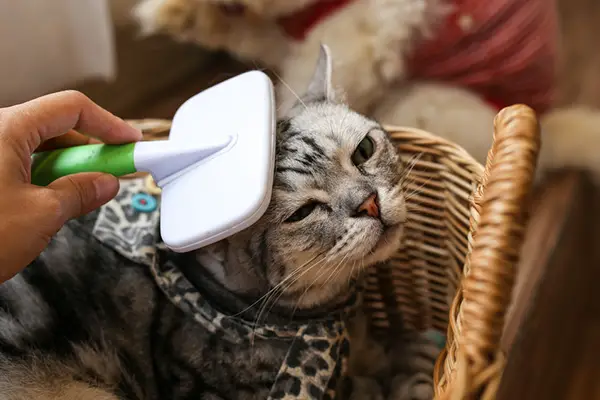
Regularly grooming and brushing your cat is very important, but that doesn’t mean you’d need to brush them as much as you can to maintain the beauty of their coat. Again, how often to brush your cat would depend on the cat you have.
Brush daily for long-haired cats, several times a week for medium-haired cats, and 1-2 times a week for short-haired cats. But this doesn’t mean that the duration needs to be the same every day.
If you’re not removing any hair or detangling mats anymore, then it’s time to stop. Regularly brushing your cat is good, but it should never be too much. Keep in mind that too much may cause bald patches to form.
Amazon Best Rated Products - Last Updated on 2025-04-02. DISCLAIMER: Some or all of the product links on this page are affiliate links. The operator of this website received a small commission if you purchase products through these links, HOWEVER, there is no added cost to you. These commissions help to fund the operation of this FurryFriendsGear.com

